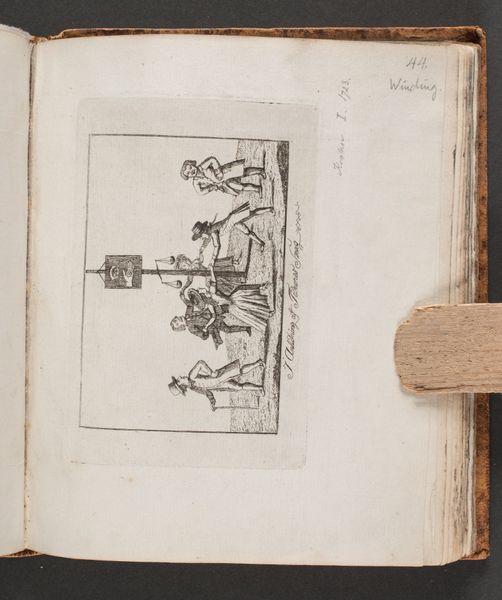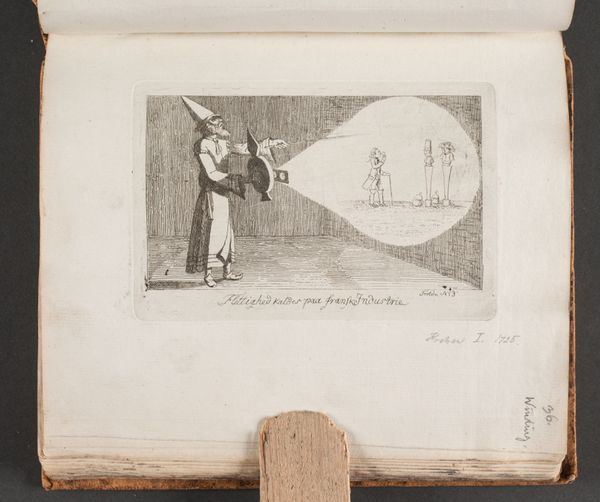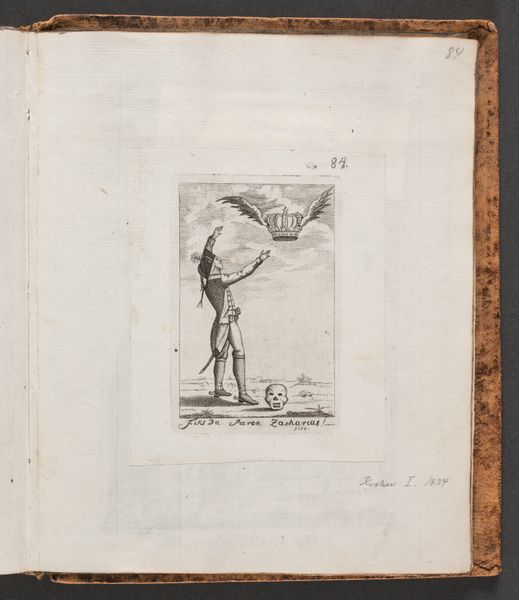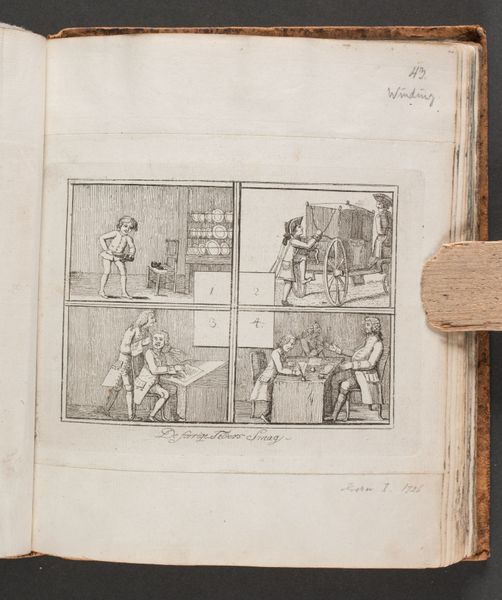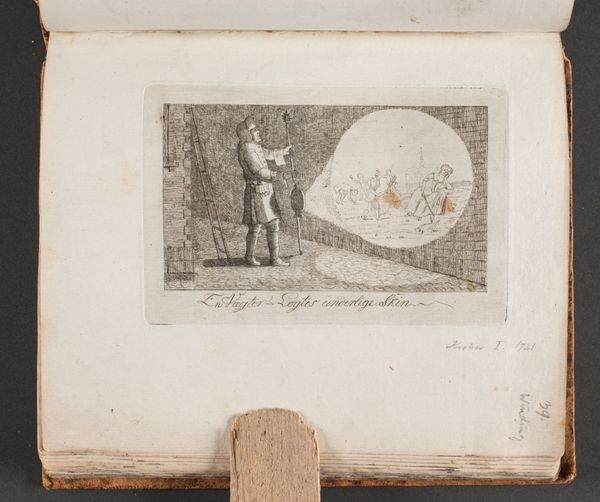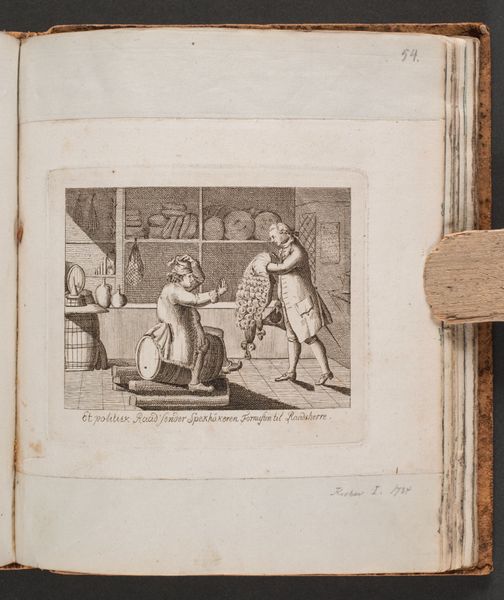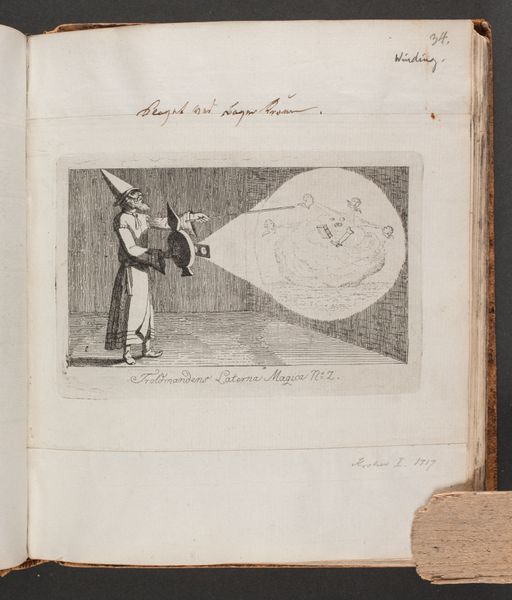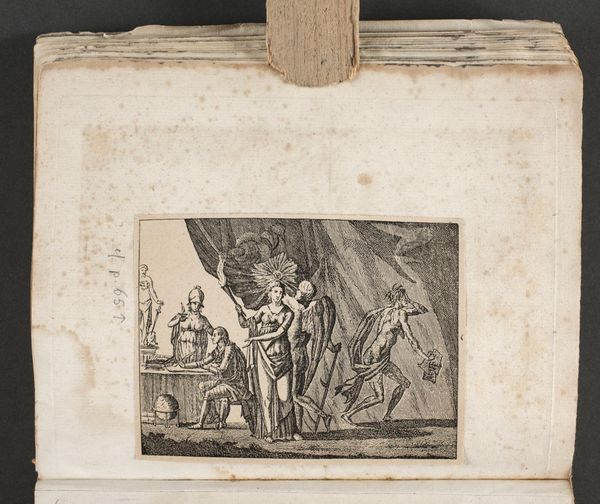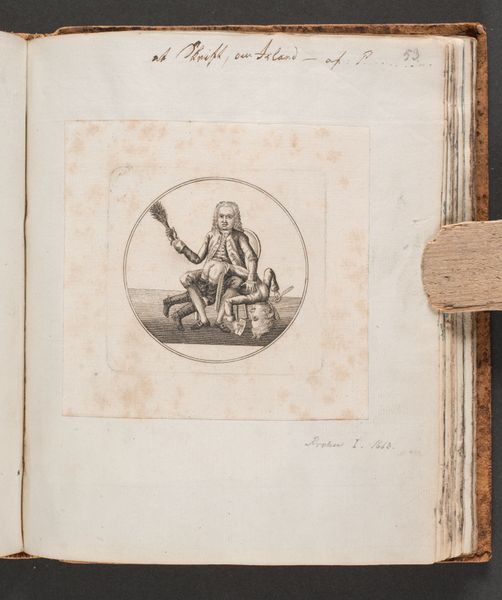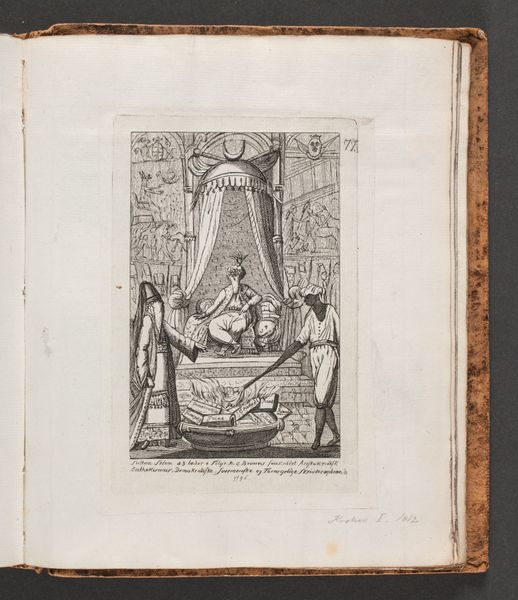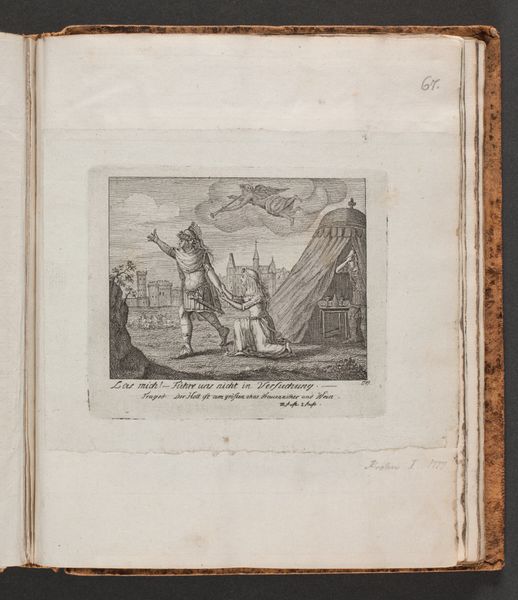
Dimensions: 174 mm (height) x 148 mm (width) (bladmaal)
Editor: So this is "Nota bene," a mixed-media drawing with etching, print and coloured pencil by H.L.S. Winding, dated 1787. There is this mythological figure, maybe a satyr, seemingly listening to a tablet filled with symbols. It has such a strange and unsettling mood, almost dreamlike. What's your interpretation of this work? Curator: The choice of a satyr immediately calls to mind ideas of nature, instinct, and transgression. Given its creation in 1787, consider the sociopolitical context. Were these romanticized depictions of mythological figures subtly challenging the rigid social structures of the time? Are these figures an expression of resistance against encroaching societal norms and expectations of reason? What might these "symbols" represent and could they allude to the emerging political or philosophical languages that the establishment perceived as chaotic? Editor: I hadn't thought about it as a form of coded resistance. So, the tablet isn't just a quirky detail; it's a battleground of ideologies? Curator: Precisely! The "wildness" of the satyr juxtaposed with this proto-language on the tablet hints at that. This tension reflects a deeper societal unease and the potential for subversion bubbling beneath the surface. Editor: The artist's use of mixed media adds to that unsettling feeling. The drawing, the etching... the colored pencil almost looks like an afterthought. Curator: The materials further complicate any singular reading of the image, and can also give information about who had access to creating art at that time. Does the use of accessible media suggest it could have been intended to be circulated widely or for a different viewership, to challenge a conventional narrative in plain sight, under the umbrella of "mythology?" Editor: That’s fascinating! I always thought of Romanticism as purely about beauty, but it’s clearly so much more than that. I’m seeing a rebellion here. Curator: Absolutely. Romanticism was equally invested in challenging and questioning power structures, and H.L.S. Winding’s "Nota bene" serves as a quiet yet pointed contribution to that discourse. Editor: Thanks for showing how to consider all these different viewpoints while interpreting this image!
Comments
No comments
Be the first to comment and join the conversation on the ultimate creative platform.
